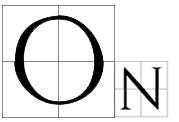The Short and Brutal History of Lobotomy
A thing of nightmares that lasted for over two decades
 On a dreary November day in 1935, an anxious Egas Moniz watched as his protege, Dr. Pedro Almeida Lima, began to drill holes into the patient’s skull. The first patient was a woman who was slated to be cured of her depression. After the holes were carefully drilled, Dr. Lima injected pure ethanol into the woman’s frontal lobe to break down and eventually destroy the fibers that connected that part of her brain to the rest of its system.
On a dreary November day in 1935, an anxious Egas Moniz watched as his protege, Dr. Pedro Almeida Lima, began to drill holes into the patient’s skull. The first patient was a woman who was slated to be cured of her depression. After the holes were carefully drilled, Dr. Lima injected pure ethanol into the woman’s frontal lobe to break down and eventually destroy the fibers that connected that part of her brain to the rest of its system.
This was the first leucotomy, and it was considered a resounding success by its creator, Egas Moniz. The patient was declared “cured” after seeing some symptoms of her depression alleviated after the surgery. However, she was not cured enough ever to leave the mental hospital to which she was confined.
The early perceived success of the leucotomy pushed Moniz to plunge ahead with his research at breakneck speeds. Drilling into the heads of mental patients would soon be a phenomenon that would sweep Europe and eventually, the world.
